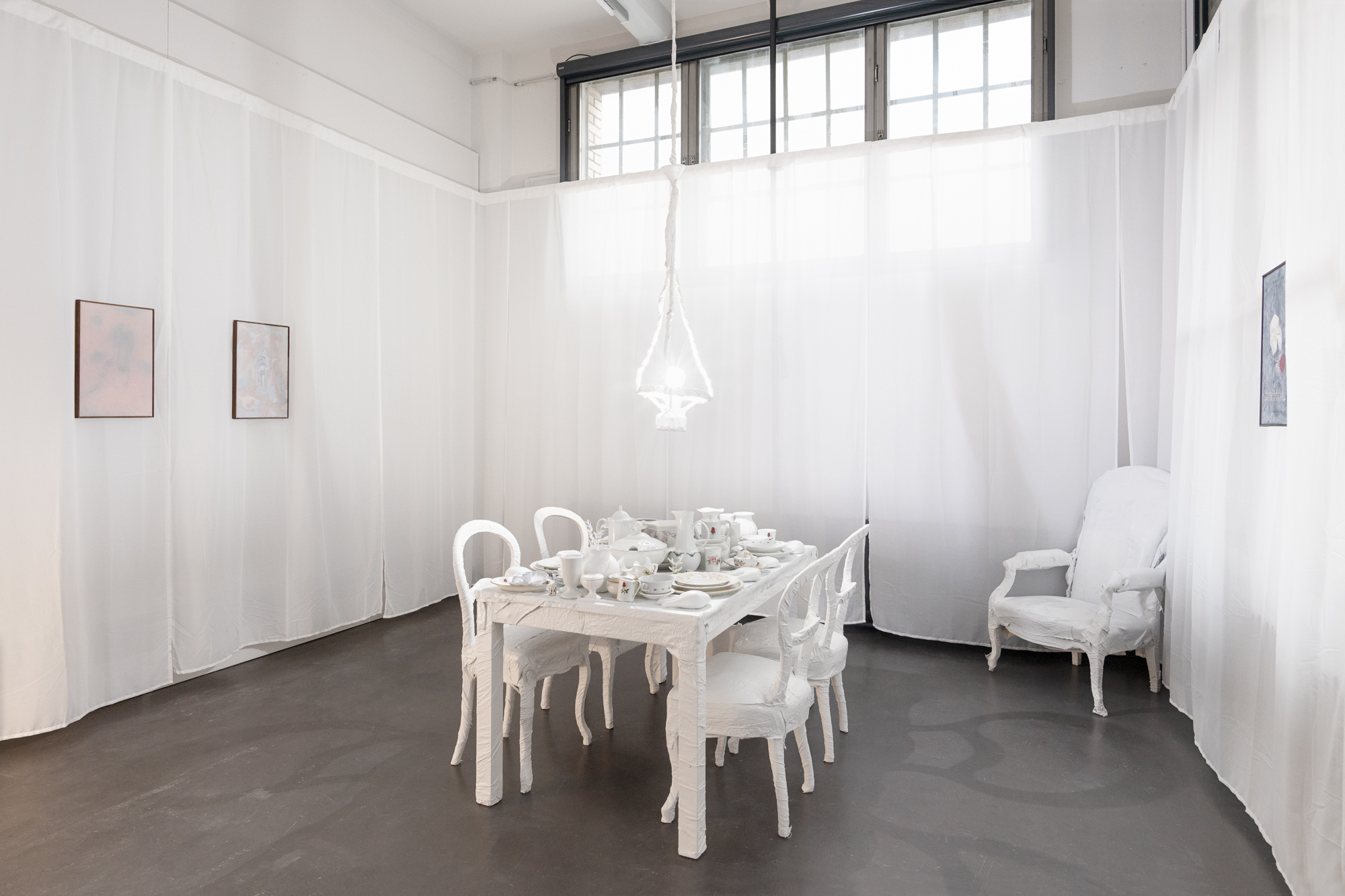Fokus
Tempus fugit

Time flies and deceives us quickly. It slips through our fingers to escape in an irreplaceable way. Just as elusive as it was once captured in Virgil’s archaic aphorism: Sed fugit interea, fugit irreparabile tempus*.
Over time there are also things that catch up with us, moments when what has been perceived as a desirable sweetness leaves us with a rancid aftertaste. Eventually, even our most traumatic memories, which some of us have been able to marginalize, threaten to haunt us. And perhaps our ghosts will hit us like waves, more and more intensely; as a result of how we have tried to force the depth of geological processes, how we have exploited an increasingly polluted landscape, and continue to fly in and out of a fragmented geography, just to concentrate our wealth instead of letting it trickle down as something common.
Sylvain Gelewski’s exhibition, Tempus Fugit, carefully navigates through our ambivalent concepts of time, our social positioning, and the pursuit of some kind of dignity. At first, we are confronted by a spatial scene reminiscent of an expanded still life depiction. A variety of obsolete furniture and heirlooms, all of which have lost their sentimental value, have been brought together based on how their appearance relates to the primary colors of the Swedish flag. With the light of the blue fields refracted through the mass of glassware and the golden intentions in the yellow cross shining in the brass and plated metal, a trope of some sort of memento mori emerges. All together, and with the walls draped in billowing velvet, the installation’s disparate yet precise materiality is arranged to form an associative scenography, open to a range of different reflections.
During the opening, the installation is activated by a performance. With their faces veiled, as if in a masquerade for past regents and nobility, two bodies are moving in an exclusive choreography. The gestures are both gentle and slightly eerie, with twisted arms and backs that bend under an invisible weight. They set the table and clear the table while pointing their fingers and accusations at each other. It is a movement of bodies dependent on the discursive order in the confluence of different times, where patriarchal and colonial structures have been inherited, internalized, and sadly repeated through generations. The notes that underlie this performance are not only visible; they also come as a collection of love songs and a Voice Over reciting a text by the artist. And although the bodies will be gone after the curtain has fallen, this soundscape leaves a recurring trace in the room for the rest of the exhibition period. These are the words and references of significance that Gelewski spins into an Adriane thread of love and solidarity, but also of uncertain grief and doubt, to guide visitors through the exhibition’s many layers and details. The narrative reaches back in time, dwells on ancient myths, and is swept along in an animated story about the looted gold veins and artifacts of imperialism. Here, as a response to his residency in Sandviken, the artist is particularly interested in Sweden’s historical position as a country, with the branches of a five-hundred-year-old royal genealogy, the later recognition as a welfare state in peace, the near hundred years of expressed neutrality and its contrast in arms export, the violence against the indigenous population of Sápmi, the increased inequality of today, and the more and more widespread fear of the other.
As a crucial part of the exhibition, there is a series of framed canvases that, in both critical and redemptive ways, capture the main lines of Sylvain Gelewski’s presented work. The blue and golden tones, with all their potential symbolism, become clearly visible again. And with their wide margins covered in oil and acrylic, and charcoal suggesting a floral ornamentation in the distance, the court jester’s peculiar features take shape at the center of the paintings, drawn directly on the linen with ink and felt-pen. One by one they turn to us and testify to how they once entertained their masters, what attributes they were expected to wear, and how they, with disarming humor, could call out the inconvenient truths without being decapitated. These paintings, with their temperamental changes in brushstrokes, can be regarded as a sort of laughing mirror (not only facing the Swedes). But the self-righteous smiles have been distorted into wry grins, perhaps not so much by what the mirrors reflect, but because of what time reveals before our eyes.
Erik Anderman
* Meanwhile, the irreplaceable time escapes. Vegilius, Georgica, 29 PCE







